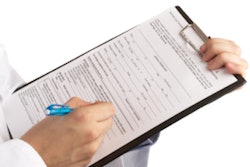
When it comes to dental implants, are those considered longer or shorter more likely to fail? Is an implant 3.8 mm in diameter less likely to fail than a 6.0-mm implant? The researchers of the largest study on implant failure to date have answers.
Implants with a 3.8- or 4.3-mm diameter and 11- or 13-mm length were less likely to fail than so-called shorter implants, European researchers report in a study published in PLOS One (February 21, 2017).
"We believe that the risk of implant loss is higher in shorter implants because of reduced primary stability," wrote the study authors, led by Rudolf Seemann, MD, DMD, of the University Clinic of Cranio-, Maxillofacial and Oral Surgery at the Medical University of Vienna in Austria.
Reseller data
If an implant is labeled as a failed implant and returned to a manufacturer by a dentist, there must be a reason. But how many implants are returned, which ones, and for what reasons? Until now, these key questions have not often been asked or resolved.
The researchers of the current study were able to obtain data from one reseller (Altatec, Wimsheim, Germany) over a seven-year period in one country (Austria). They wanted to evaluate the influence of diameter, length, surface area, and surface type on early implant returns, based on sales and return report data. They had access to data on more than 69,300 implants.
The overall return rate of the implants was 2.78% (1,928 implants), which the authors noted was comparable to other studies. They found that 80% of the implants that failed were returned within 157 days, and an additional 15% of these implants were returned within 750.25 days.
The researchers divided the returned implants into the following three categories:
- Root-line (RL) implants: Root-shaped implants have a 2-mm-wide machined neck (n = 11,220).
- Screw-line Promote1 (SLP) implants: These nontapered implants have less apical freedom with a 1.4-mm machined neck (n = 32,775).
- Screw-line Promote1plus (SLPp) implants: These implants are similar to the SLP but with a 0.4-mm machined neck (n = 25,382).
The implants came in four different lengths (9 mm, 11 mm, 13 mm, and 16 mm) and four different diameters (3.8 mm, 4.3 mm, 5.0 mm, and 6.0 mm).
The researchers divided the failures into three different categories, based on length of time after placement:
- Early/type A: Loss was considered within 160 days of implantation and accounted for 80% of all losses.
- Delayed/type B: Loss took place between 160.1 and 761.4 days and accounted for 15% of all losses.
- Late/type C: Loss occurred at least 761.5 days after implementation and accounted for the rest of the losses.
Why were these implants considered a failure? Osseointegration was the most cited reason, with almost 60% of type A failures, 36% of type B failures, and more than 23% of type C failures classified as osseointegration failures, the study authors reported. Other reasons for failure are shown in the table below.
| Reasons for implant failure | |||
| Days after implantation | |||
| Reasons | Within 160 days | 160 to 761 days | More than 761 days |
| No reason given | 28.1% | 45.8% | 47.4% |
| Infection | 9.7% | ||
| Biomechanical causes | 2.4% | ||
| Misplaced | 0.5% | ||
| Peri-implantitis | 6.8% | 19.2% | |
| Inflammation | 3.8% | 5.1% | |
| Augmentation | 3.4% | 1.3% | |
| Low primary stability | 1.7% | 1.3% | |
| Other | 2.0% | 2.6% | |
For implant losses within 160 days, the authors reported that the return rates ranged from 0.56% for the 5 x 16-mm SLPp implants (n = 179) to 12.0% for the 6 x 9-mm RL implants (n = 25), with a median rate of 2.47%.
For implant losses 160 to 761 days after implantation, the authors reported that 13 different implant types had no failures (RL 4.3 x 16 mm, 5 x 15 mm; SLP 4.3 x 16 mm, 5 x 16 mm, 6 x 9 mm, 6 x 13 mm; SLPp 4.3 x 16 mm, 5 x 16 mm, 6 x 9 mm, 6 x 11 mm, 6 x 13 mm, 6 x 16 mm), while the highest failure rate (6.67%) was for the 6 x 16-mm RL implants, for a median rate of 0.37%.
For losses more than 761 days after implantation, the authors reported that the return rates ranged from 0% for half of the 48 implant types (3 types x 4 diameters x 4 lengths) to 4.0% for the 6 x 9-mm RL implant, with a median rate of 0.03%.
The implant with the highest probability of success (no returns) was the 4.3 x 13-mm screw-type implant, they noted.
Implants with diameters of 3.8 mm to 5.0 mm had the lowest return rates, with the 4.3-mm-diameter implant having the lowest rate, the authors reported. The implants with a diameter of 6.0 mm had significantly higher return rates. In addition, shorter implants showed significantly higher early return rates compared with the most sold implant length of 13 mm.
Lack of specialists
The authors noted several potential limitations to their study, including the fact that implants were placed by either a general practitioner or a maxillofacial surgeon, because there are no oral surgery specialists in Austria.
"Since no further specialization is needed, all dentists are authorized by law to insert implants," they wrote.
They also noted that not all failed implants may have been returned immediately after failure. It is also possible that implants that were accidently opened may have been returned and declared an implant failure, they added.
With regard to the primary implant failure seen (type A within the first 157 days), the implant with the highest probability of success (no return) was the 4.3 x 13-mm screw-type implant, the authors concluded.
"The study shows that, given standard indications and sufficient bone, the general surgeon may use the universal SLPp and SLP implants of 3.8- or 4.3[-mm] diameter and 11- or 13-mm length. The other implants described in this report may be selected in the presence of specific indications and for specific planned treatments," they wrote.



















